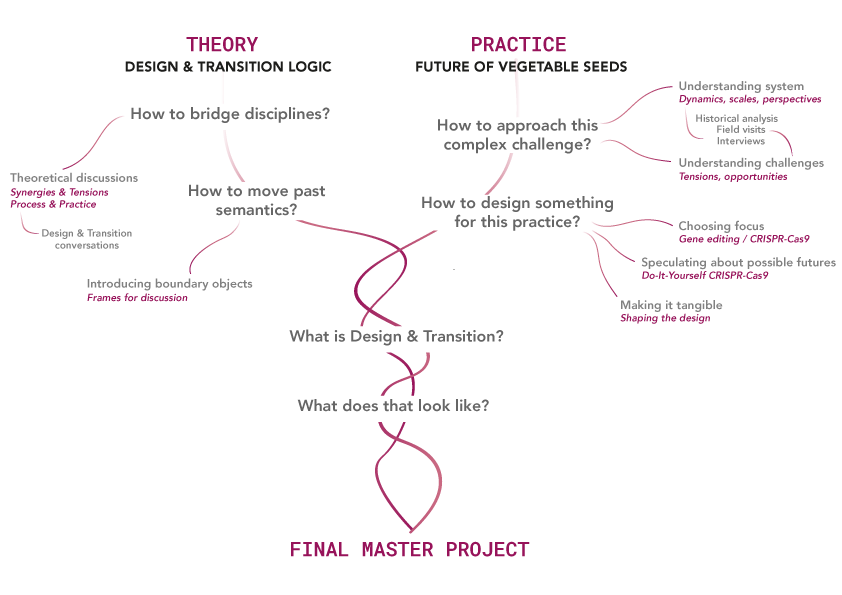DRIFT / DIT
september 2021 - march 2022
How can we influence the transition towards just, resilient and sustainable futures? Is it actually possible to design new systems or futures? Many designers and transition researchers ask themselves questions like these on a daily basis. In order to address the complex societal challenges we face, we need to think about different approaches or ways of dealing with problems. We have to let go of conventional problem solving processes, stop with compartmentalising and accept all the complexity and wickedness that comes with these challenges. Many design-oriented approaches have moved into this direction. Transition research, however, has already been focused on this since its origin. There seem to be synergies and tensions between the two, but how could these disciplines support each other, to empower radical change? Within my Final Master Project I set out to explore this question.
Next to having a firm theoretical basis, the project aimed to use the gained theoretical knowledge in a practical design case which related to the future of the vegetable seed industry. The seed industry is of great importance to our global food system. Without seeds, there is little to no food left for us to eat. Over the past years many new techniques have been introduced to produce seeds. One of these techniques is CRISPR-Cas9, a gene editing tool that allows you to change the DNA of the plant and thus the seeds. Grow at home is a speculative design that responds to the huge debate that has resulted from the usage of CRISPRCas9 to edit plants. It consists of a CRISPR-Cas9 kit that allows everyone to edit a chosen vegetable to a desired state at home. The steps of the kit are displayed in an exhibition, with questions that confront visitors with the use of the technology. By choosing your answers you will learn the consequences of your choices at the end. The design aims to bring the lab to the people and counters the corporate movement by making gene editing more democratic and allowing it to be combined with more natural ways of growing food.
